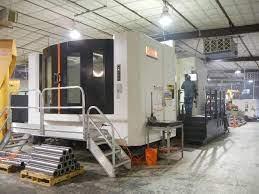Invented in the late 19th century by German engineer Rudolf Diesel, the diesel engine remains one of the most efficient powerplants available today. It has an advantage over gas engines that makes it a favorite for commercial trucks and other vehicles.
The basic structure of the diesel engines is very similar to that of a gasoline engine. Both have a crankshaft spinning, pistons moving up and down and air being pumped in and out.
The Diesel Cycle
Diesel engine operates on a theoretical principle based on the Carnot cycle. The cycle is an idealized thermodynamic cycle that maximizes efficiency of a heat engine. It consists of four successive processes: reversible isothermal gas expansion; reversible adiabatic gas expansion; isothermal compression; and reversible adiabatic compression.
During each process the working substance absorbs heat from its surroundings at a constant temperature, TH, and then delivers this energy into its environment as work at a lower temperature, TC. The system's entropy is unchanged during the entire process, which illustrates why the process is reversible. The process can be represented graphically on a T-S diagram (temperature-entropy diagram) as shown below, showing the temperature and entropy changes during each of the four processes. Any real engine operating between TH and TC can never approach the maximum efficiency of a Carnot cycle, because all real engine processes are not reversible and will introduce more entropy into the environment than they take from it.
Fuel Injection
In diesel engines, fuel is injected directly into the combustion chambers past the intake valves. This is called direct injection and it provides very precise fuel metering that allows higher compression ratios for more power and cleaner emissions.
Injection systems operate at very high injection pressures that require special design and construction to withstand these stresses. They must deliver the correct amount of fuel to the diesel gensets for the entire power requirement over extended periods of time.
Injection systems are also designed to ensure that fuel atomizes into small droplets that will burn well in the hot combustion gases. This is an important step in the energy conversion process and it is a primary objective of the injection system design.
Power
In the world of power generation, large diesel engines are used to drive pumps and generators that produce electricity. Hospitals, electric utilities and other large facilities also use diesel-powered generators to provide backup or emergency power supplies.
In order for a diesel engine to create power, the fuel must be injected into air that is hot enough to ignite it. In gas engines, spark is introduced during the intake stroke; in a diesel engine, during the compression stroke, the piston descends to a point just below top dead center (TDC). This opens the injector valve(s), and atomized diesel fuel is injected into the hot compressed air. When the piston rises during the power stroke, the mixture of oxygen and diesel fuel self-ignites, driving the crankshaft. The extreme cylinder pressure created during this process, and the long duration of the power stroke help explain why diesel engines create such impressive amounts of torque. Moreover, the fuel-efficiency of a diesel engine means that it costs less to operate in the long run.
